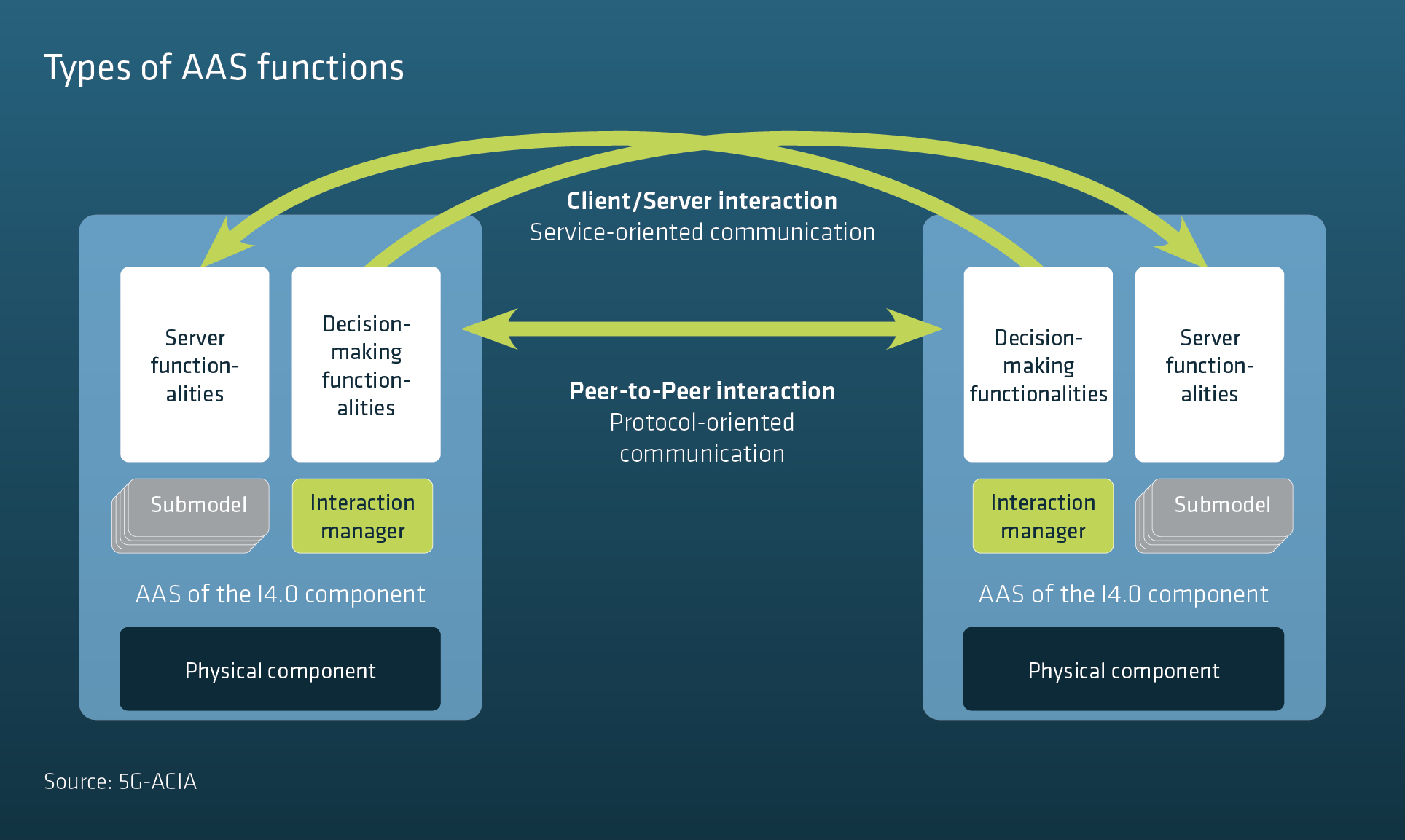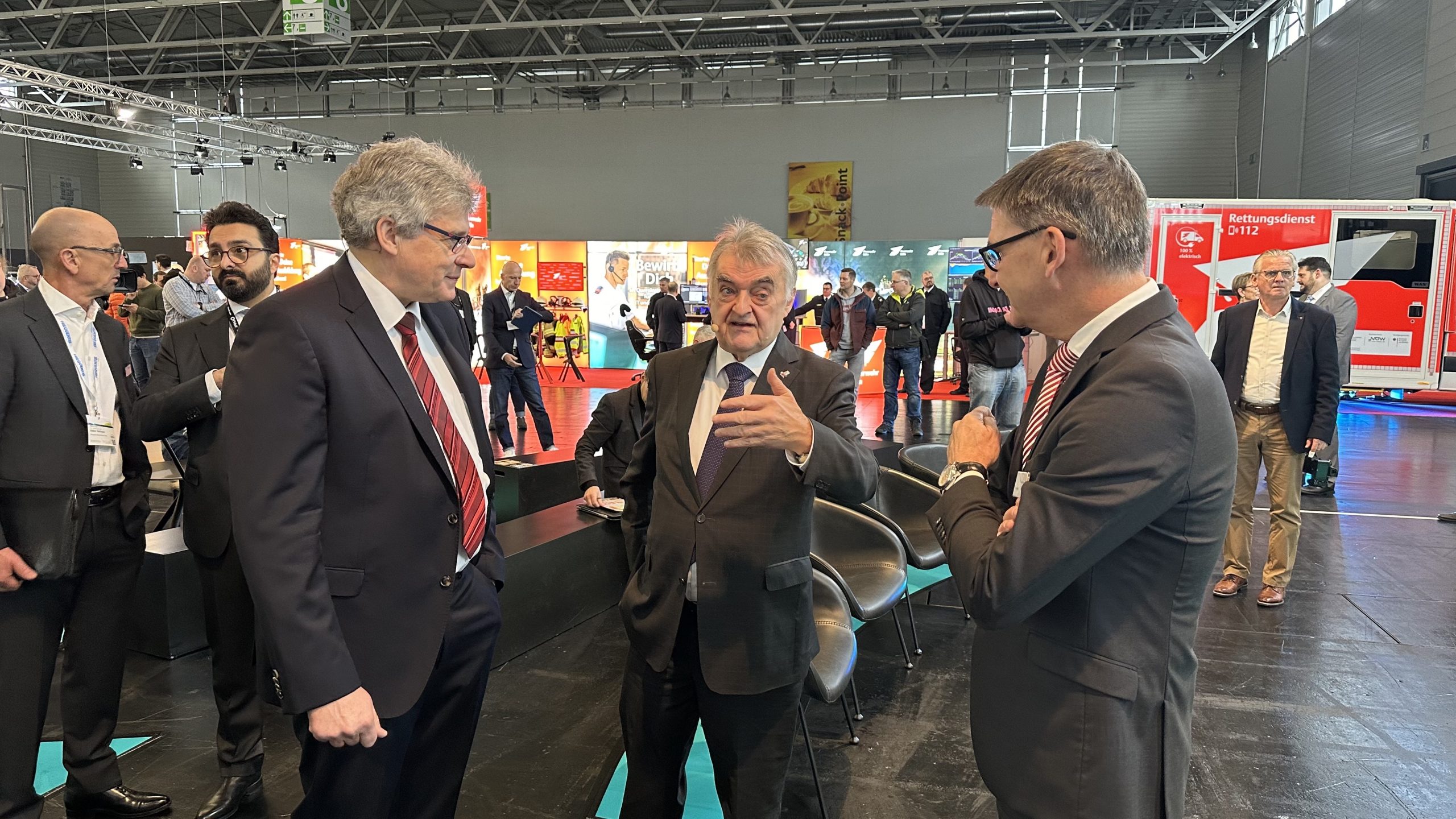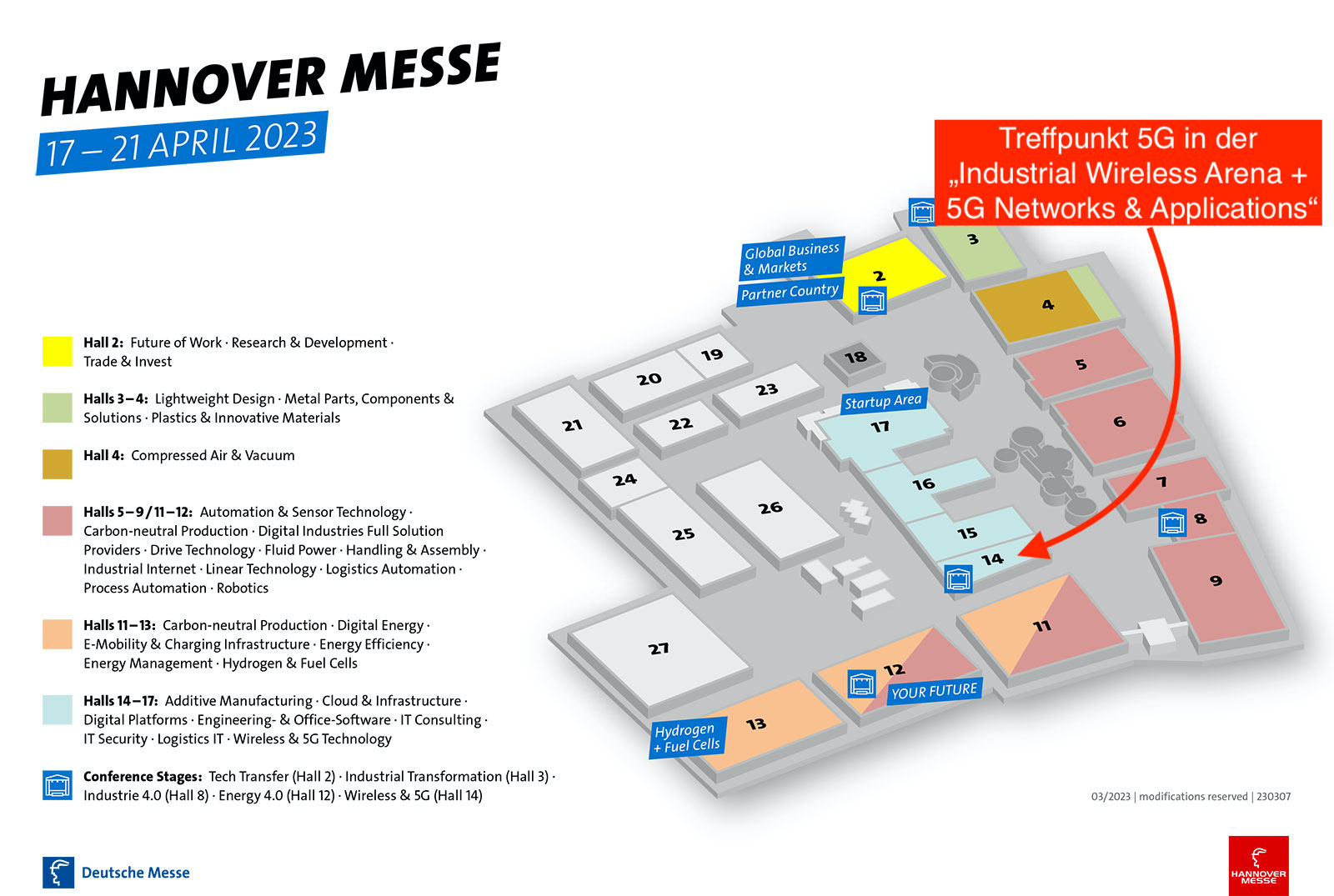The 5G ACIA promotes the use and holistic benefits of the Digital Twin approach in industry. The graphic shows that in the future all entities will be able to initiate (horizontal) interactions with others. (Image: 5G ACIA)
5G is becoming a fundamental part of the communications infrastructure for connected industries and needs to be integrated into the digital twin to improve development, operation and maintenance–that’s a call from the 5G ACIA. It is committed to the use of 5G in industrial applications and has published a white paper on the subject.
In connection with the factory of the future, the term “digital twin” comes up again and again. As a bridge between the real world and that of bits and bytes, it provides relevant information of an object and thus enables, for example, simulations and an overarching exchange of data in a factory. Such a collection of data, properties and models now applies not only to production equipment and physical objects, but also to communications networks such as 5G and intangible entities and situations – such as mobile network configuration and performance reporting.
“The benefits of a digital representation for the integration of 5G into Industrie 4.0 are enormous. That’s why we concluded that it makes sense to also formulate the cellular system deployed in factories as a digital twin to understand a cellular network as a fundamental information backbone,” says Josef Eichinger, head of 5G cellular system design at Huawei’s European standardization and industrial development department.
For example, before a planned change, a digital twin can provide helpful information about how a transmit/receive situation will look specifically after an adjustment to production lines. As a result, this knowledge helps to efficiently restore an optimal state. Since several options are usually possible to achieve the desired communication quality, from beam delivery to the position of the transmitter, the digital twin saves time-consuming trial and error and quickly provides the right measure via the results of a simulation.
Asset Administration Shell as data basis
The data basis for such simulations comes from the Asset Administration Shell and, in particular, KPI monitoring, which looks back at past events and performance values. They form a model that can be used for a machine learning algorithm that predicts what would happen as a result of a change. Consequences of actions thus become transparent before they are implemented.
The 5G-ACIA provides information on how Industry 5G and the digital twin support the implementation of Industry 4.0 concepts in a white paper, “Using Digital Twins to Integrate 5G into Production Networks.” Here, manufacturers of 5G-enabled devices who are already producing products for Industrie 4.0 will find answers to the questions of how to implement a 5G module, where the standardization stands and where possible partners are. Service providers are also among the addressees: “In my view, the driving 5G forces of the future are the integrators. They learn in the white paper that such a neutral description language or the way information is presented via an AAS is very helpful,” says Eichinger.
Structured description of a 5G network
The integration of a 5G system into the factory of the future requires a suitable description of the 5G system based on AAS principles. This paper discusses various aspects and proposes a model for a structured description of the entire 5G network including the 5G UE (User Equipment). In addition, preliminary definitions of sub-models and parameters/properties are established based on the currently valid 5G definitions from 3GPP.
The approach is also forward-looking from the perspective of user industries: “Digital twins will be one of the key enablers for highly flexible factories including new supply chain applications. The most important technical feature behind so-called “Industry 4.0″ concepts is a path to interoperability between solutions from different vendors as well as communication network providers, because 5G networks will be the informational backbone of the factories of the future,” comments Bernd Kärcher, former Head of Advanced Development “Automation and Control” at Festo.








Leave A Comment